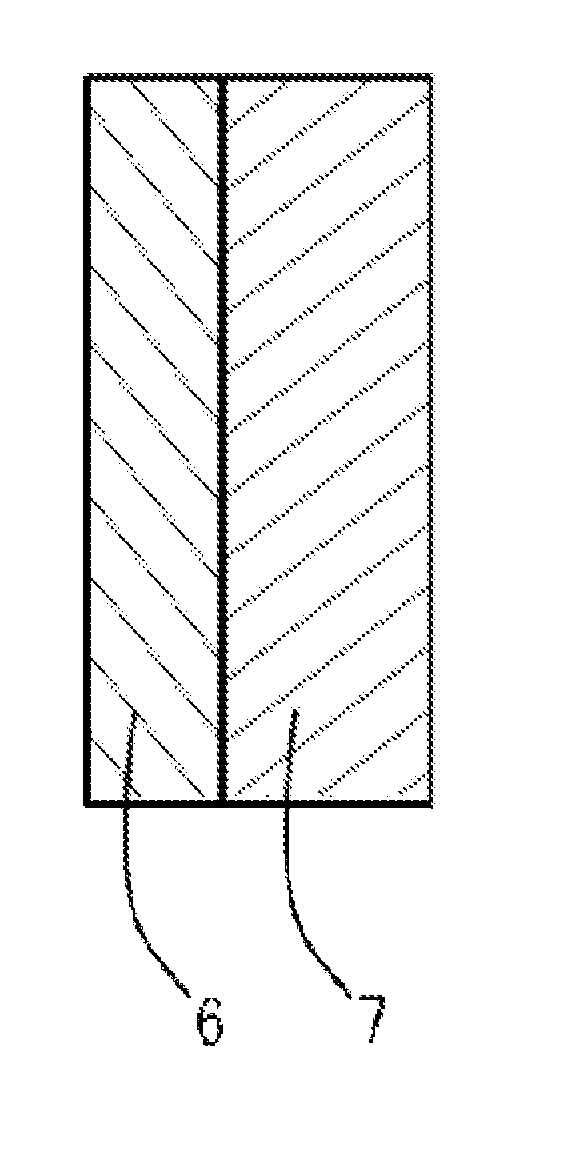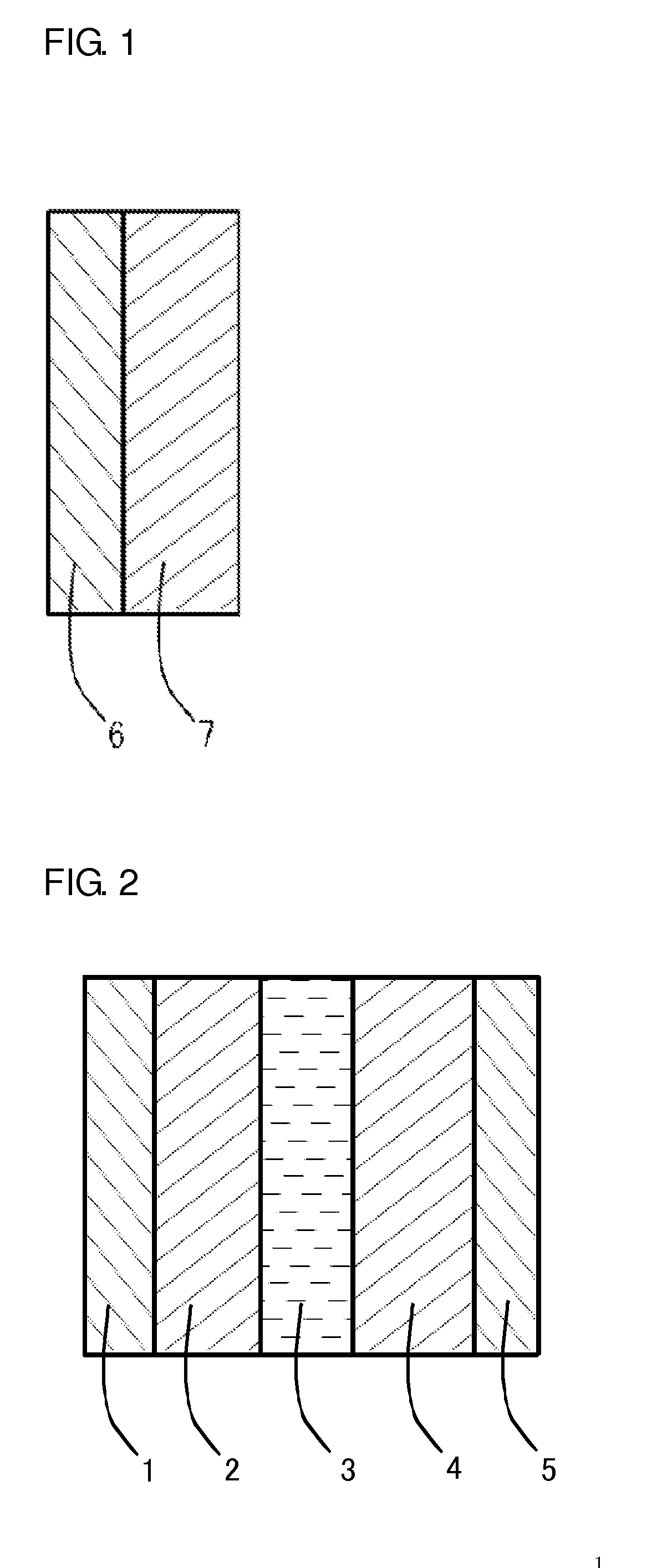Power storage device electrode, and power storage device employing the electrode
- Summary
- Abstract
- Description
- Claims
- Application Information
AI Technical Summary
Benefits of technology
Problems solved by technology
Method used
Image
Examples
example 1
Preparation of Electrode Sheet
[0068]An electrolyte solution was prepared which contained 4.6 g of lithium tetrafluoroborate, 20.9 g of propylene carbonate and 15.7 g of ethylene carbonate. Then, 1 g of the sulfide-containing polyacrylonitrile-methyl acrylate copolymer prepared in Exemplary Production Process 1 was dissolved in 6.88 g of the electrolyte solution at 140° C. After 0.17 g of the polyaniline prepared in Exemplary Production Process 2, 0.67 g of 2,5-dimercapto-1,3,4-thiadiazole (DMcT) and 0.084 g of electrically conductive carbon black (DENKA BLACK available from Denki Kagaku Kogyo K.K.) were added to the resulting solution and 10 g of acetonitrile was further added to the solution, the resulting mixture was kneaded in an agate mortar. The resulting slurry was applied onto carbon paper (TGP-H-030 available from Toray Industries Inc.), and dried at 60° C. in vacuum for 3 hours. Thus, an electrode sheet was produced which included a current collector of the carbon paper and...
example 2
[0079]An electrode sheet (positive electrode) was produced in substantially the same manner as in Example 1, except that N-methyl-2-pyrrolidone was used instead of acetonitrile. The weight of the active material in the electrode sheet was 1.51 mg / cm2 as measured in the same manner as in Example 1.
[0080]The composite material layer of the electrode sheet had a thickness of 35 μm, a porosity of 32% and an average pore diameter of 2.5 μm as measured in the same manner as in Example 1.
[0081]A cell (power storage device) was produced in substantially the same manner as in Example 1, except that the electrode sheet produced in the aforementioned manner was used as the positive electrode. The cell had a capacity density of 320 mAh / g and an energy density of 850 mWh / g as measured in the same manner as in Example 1.
example 3
[0082]An electrode sheet (positive electrode) was produced in substantially the same manner as in Example 1, except that the polyaniline (produced in Exemplary Production Process 2) was not blended and the proportion of the electrically conductive carbon black (DENKA BLACK available from Denki Kagaku Kogyo K.K.) was 0.067 g. The weight of the active material in the electrode sheet was 1.23 mg / cm2 as measured in the same manner as in Example 1.
[0083]The composite material layer of the electrode sheet had a thickness of 41 μm, a porosity of 37% and an average pore diameter of 2.3 μm as measured in the same manner as in Example 1.
[0084]A cell (power storage device) was produced in substantially the same manner as in Example 1, except that the electrode sheet produced in the aforementioned manner was used as the positive electrode. The cell had a capacity density of 310 mAh / g and an energy density of 780 mWh / g as measured in the same manner as in Example 1.
PUM
 Login to View More
Login to View More Abstract
Description
Claims
Application Information
 Login to View More
Login to View More - Generate Ideas
- Intellectual Property
- Life Sciences
- Materials
- Tech Scout
- Unparalleled Data Quality
- Higher Quality Content
- 60% Fewer Hallucinations
Browse by: Latest US Patents, China's latest patents, Technical Efficacy Thesaurus, Application Domain, Technology Topic, Popular Technical Reports.
© 2025 PatSnap. All rights reserved.Legal|Privacy policy|Modern Slavery Act Transparency Statement|Sitemap|About US| Contact US: help@patsnap.com


